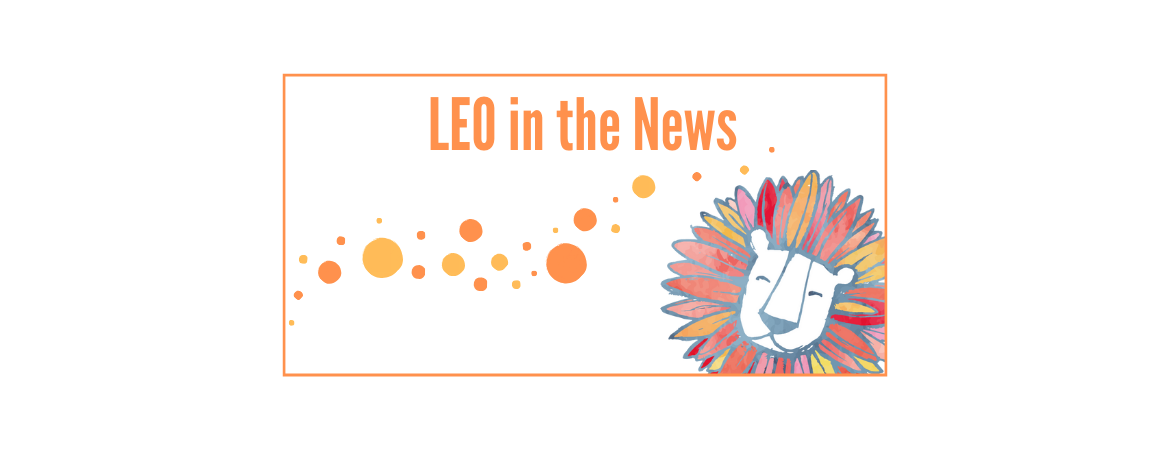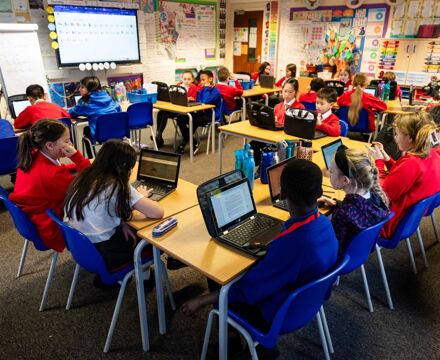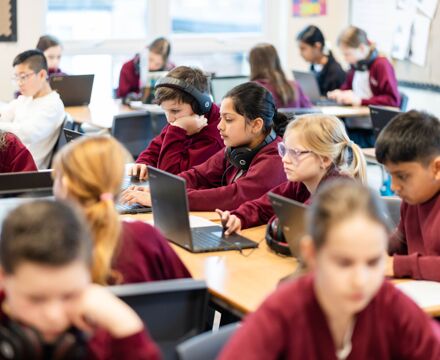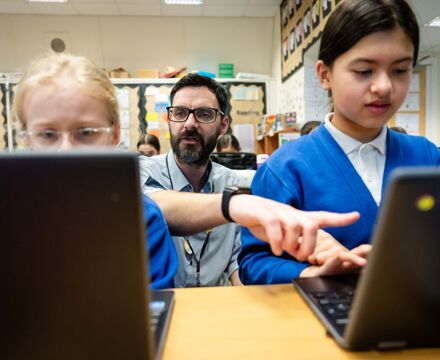This is how Google Technology enhances the Educational Project of Schools
Back to News & Blogs
When the Covid-19 pandemic hit in 2019, the schools that make up LEO Academy Trust – a total of 9 located in the south-east of the United Kingdom – embarked on a powerful digital transformation in which they invested time, money and human resources. Thanks to this process, they have been able to redesign their educational project, making the most of the tools and technology they had access to. “There is a wide range of technological products and we spent a lot of time studying which ones were most suitable to meet our educational objectives, while also being economically viable in terms of initial acquisition and long-term IT support,” explains Graham Macaulay, Strategic Partnership Director at the institution.
In addition, other requirements such as the ability to manage all devices at scale via the cloud, ease of use, speed and, of course, the ability to keep them safe and secure were also essential when selecting the right technology for this project. “We ultimately decided to go with Google technology because of the flexibility and the positive feedback it gave us: while some students needed a traditional clamshell device, others needed tablet-based technology.” So today, all teaching staff and students from the second cycle of primary school (7-11 years old) have their own Chromebook, and the rest of the students (a total of 4,500 between 4 and 11 years old) have iPads or Chromebooks at their disposal whenever they need them.
They also use the Google Workspace for Education Plus platform , which includes tools to improve learning, communication and collaboration in classrooms at different levels. “We needed a platform and infrastructure that was suitable for the children in Infants (4 years old), but also for our staff and faculty members,” Macaulay continues.
Classes adapted to the needs of the students
In the classrooms at LEO Academy Trust, this equipment means that lessons are tailored to the needs of each student, even those with special needs: the teacher explains, the students do their exercises and can continue to progress through the content if they are faster than their peers. “Students who have traditionally had more difficulty in the educational process now have responsive, adaptable and personalised technology that can meet their individual needs. But most importantly, they feel empowered to meet any challenge,” says Macaulay. The layout of the classrooms has also changed in this transformation project: now, the desks are not fixed and each student can get up and move freely at any time depending on whether they need to pay more attention to the explanation or not. In addition, the classrooms lead directly to the library and are open-plan, so that teachers also have the possibility to move between one and another, listening to the explanations of their peers or helping a student.
“This has allowed them to respond much better to the individual needs of children by providing them with real-time information, and it has also made it possible for teachers to be more efficient as they can spend even more time working directly with their students,” Macaulay confirms, stressing that students have also benefited from having this technology: “They are now much more independent and use technology to learn when they need to. Some want to work with a digital tool, while others may use a different tool depending on their individual needs,” she notes.
An improvement in equality and inclusion
In the space of four years, these schools, located in areas characterised by a lower-middle socioeconomic level and ethnic diversity, have seen substantial improvements in multiple variables ranging from inclusion and equality to aspects more closely related to their finances and educational inspection. This has been confirmed by a study commissioned by the institution itself and led by Fiona Aubrey-Smith, an independent consultant and researcher who has had the support of a team of 16 school researchers, and for which 4,500 responses to questionnaires, more than 600 documents, 65 interviews, 24 focus groups and hundreds of hours of debate and professional reflection have been analysed. One of its main conclusions is that in LEO schools, student performance exceeds the average in national tests and, in fact, the difference between the national averages and those of these schools increases every year: from 14 to 23% in the last three years. Furthermore, the proportion of students achieving better results in national assessments in reading, writing and mathematics is more than three times the national average over the same period.
The number of children on the special needs register has been reduced by around a third thanks to the technology-enabled inclusive practices they have implemented, while digital assignments have increased classroom efficiency by 23%, allowing time to be repurposed for more targeted and inclusive learning. Attendance figures are also above the national average, and staff satisfaction is consistently 15-20% above national benchmarks, resulting in exceptionally high levels of staff retention. Finally, the reduction in the printing of worksheets and the number of exercise books saves around 400 trees per year and a financial saving per student equivalent to half the cost of Chromebooks.
With results like these, LEO Academy Trust plans to maintain its philosophy of leveraging the benefits of technology and offering the best possible education to its students. “It is clear that as technology evolves and develops, we want to continue to adopt the latest technological solutions to deliver quality education. Like many organisations, we are grappling with the challenges and opportunities presented by AI and how (and where) to invest resources to maximise the impact of AI,” concludes Macaulay.




